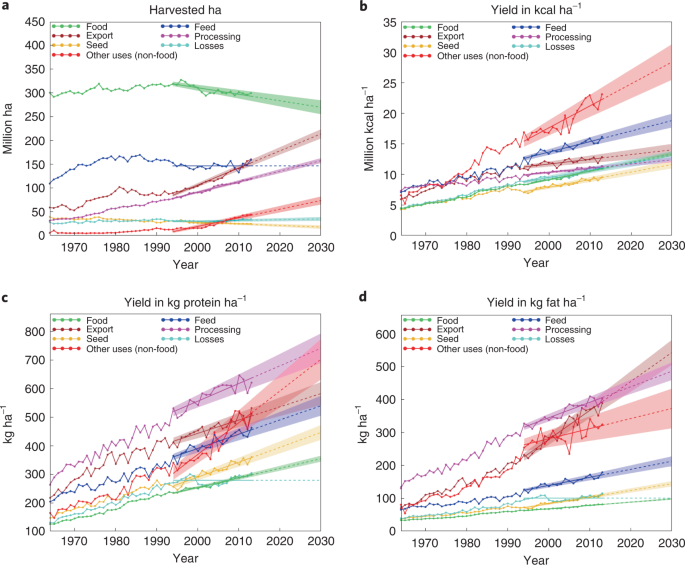…
Spatially, the shift in the harvested area from food and feed towards processing in the United States is reflective of the evolving role of the country in global crop production and renewable energy targets25. Similar but less dramatic changes have occurred in Europe. The changes observed in Latin America from a region oriented to food production, to harvesting feed and processing crops, have been observed since the late 1990s with the expansion of maize and soybean harvests pushed by commodity prices and exchange rate26 and at the cost of tropical ecosystems27,28,29,30. China’s movement away from harvesting crops for direct food utilization to processing and feed crops has been mainly driven by the changes in its consumption structure due to rising incomes and population where people demand high-value food products31. The country can substantially improve its domestic soybean (and other crops) production by optimizing the spatial distribution (Fig. 2 and Supplementary Figs. 1 and 2) and thus reducing pressure on domestic and foreign environmental resources. Similarly, in India, demand for processed food has increased due to demographic changes and health consciousness, increased demand for branded and convenient items, modernization of retail and food service sectors and heightened efforts to develop food manufacturing by the government31.
…
We recommend that food-insecure nations, non-governmental organizations and other aid groups immediately incentivize harvests and yield growth of directly consumed food crops. To close any gap in nourishment in food-insecure nations that cannot be locally met, highly productive world regions should also be incentivized to divert a portion of their production towards directly consumed food crops. Such changes should prioritize equitable access for the food undernourished and ensure justice for farmers and agriculture-sector livelihoods and should be substantively discussed during policymaking.


